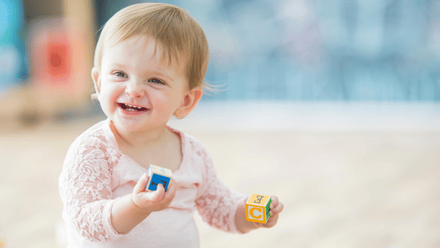How to improve communications with parents and carers
It’s ten minutes to closing and you’ve got jobs to do: washing the cups, stacking the chairs, submitting the register… You have four children left in the room, happily playing with the bubble machine and exploring with torches in the darkened sensory space.
Four children, four handovers. Four toddlers taking eager running jumps to parents and carers, who delightfully greet their little one and then turn to you.
“So, how’s he been?”
It might seem like a daily practice, a routine conversation with a script by which you fill in the gaps depending on how the day has been filled. But, handovers are so much more! They are a perfect opportunity to cultivate relationships and have meaningful conversations with one of the most influential people in that child’s life.
This learning workout will explore how we develop these meaningful conversations and what this means for wider practice.
Meaningful relationships with parents are those built on trust, understanding and shared aims. In early education and care, it is vital that open communication is made accessible and meaningful for everyone working towards a common aim. Communicating effectively with parents and carers is the key to unlocking all of these successes and means that professionals recognise the valuable insight those at home have into the child’s development and wellbeing.
These relationships take time to evolve, particularly for families who have not been involved with the setting before.
Think of the parent/carer and educator relationship like a road, with a brick wall through the middle.
For some families, this wall might be taller or built with stronger cement. For others, it could be low and easy to hop over. The wall represents the barriers in place that may impact how a relationship with educators is built , which may include factors like:
- language – is English an additional language for them?
- understanding of early education and care
- access to technology (especially if learning journals are online)
- financial opportunity
- own experiences in education.
Communication – genuine, authentic conversation with a friendly, accessible tone – is our chisel; it allows us to begin to break down the wall and gain better understanding of the many wonderful families we work with.
This can take time, but it is a labour of professional love. Here’s some tips on where to start and how to keep going:
Make handovers heartfelt
As we described earlier, handovers can be difficult to negotiate when you’re busy with other tasks and responsibilities. Try to coordinate, as a team, making space for parents and carers to have opportunities for comprehensive chats at the beginning and end of the day with someone who has their full attention on that family alone. Be mindful of who else is around and, where possible, keep discussions to a private area to encourage a sense of confidence.
Listen as much as you talk
Handovers are often a drill to run through all the care essentials and activity highlights of the day, which means that most of the time, parents and carers are listening to you rather than contributing their reflections. Aim for a balance of listening and talking during your conversations, gaining as much insight from them about home environments as they do about what has happened during the day.
Take interest
Once a relationship begins to grow, make it known that you’re interested in the child’s lifestyle beyond their time in setting. Nuggets of information such as the occupations of those living at home, any pets they have or plans for the weekend all help to build a stronger image of the child’s experiences and can be incorporated into their interest-led play, helping to bridge the gap between home and setting.
Be understanding
We all have off days and we all face challenges – some more than others. Building a strong relationship also means that we communicate these hardships to provide a better context and facilitate as much support as possible. If a parent/carer discloses a difficult situation, compassion and empathy go a long way in crafting a trusting culture for families to reach out and this can go a long way for developing a sustainable partnership moving forwards, too.
Key takeaway
Whilst how we communicate is just one aspect of forming secure parent/carer partnerships, it is a core value. Without sensitive, clear and inclusive communication, parent/carer partnerships would crumble on weak foundations.
Why not take a look at some of our other member resources around building strong partnerships to learn more?






